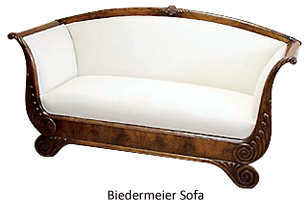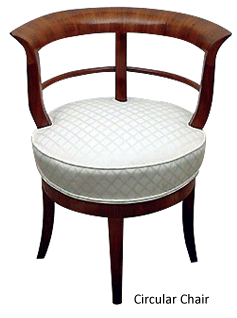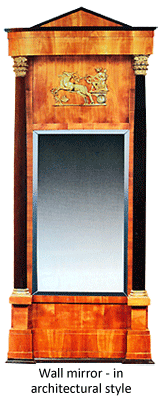- Prelude
- Editorial
- Manjit Bawa
- Husain's Calcutta
- Vivan's Visionary Reconstruction of History at Victoria Memorial, 1998
- The Remaking of Indian Painting
- Picasso Re-visited
- Benodebehari Mukherjee: A Recluse and the Centenary Show
- In Past and Present Continuum Speaking to Thota Vaikuntam
- The Importance of Being Husain
- Image-making to Image-circulation: Implicated Image(ry)
- 153 Years Old yet Young at Heart: Mumbai's Sir JJ School of Art
- Two Decades: A Critical Insight by an Art Critic and an Artist
- Biedermeier Style: Biedermeier Furniture
- Vacheron Constantin
- The Irony of Andy Warhol
- Then and Now: An Indian Perspective to the Art Market 1990-2010
- Pablo, Andy, Here I Come
- What Happened and What's Forthcoming
- Bid's Got Hammered?
- Anish Kapoor at National Gallery of Modern Art in Delhi and Mehboob Studio in Mumbai
- Tribute to Hemanta Misra: the “Calcutta Group” Painter
- Art Events Kolkata
- Mumbai Art Sighting
- Art Bengaluru
- Exploring the Riverine Culture of Bengal
- Alternative art practices define Bangalore
- India Art Summit Turns Three
- An Aesthetic Fair
- SSVAD: A New Arts Centre in Santineketan
- Visible Invisible by Siraj Saxena
- A Fleeting World : Paintings by Sunil De
- Previews
- In the News
ART news & views
Biedermeier Style: Biedermeier Furniture
Volume: 3 Issue No: 12 Month: 1 Year: 2011
by Amitabh Bachhawat
 It was through a political caricature appearing in a German newspaper in the late 1840s who typified a well to do middle class man without culture, the term Biedermeier originated. Two German writers, Ludwig Eichrodt and Adolf Kussmaul named it after the typically bourgeois style of the period - Gottfried Biedermeier - with Gott meaning God; fried meaning peace; Bieder meaning commonplace and meier meaning steward. It wasn't called Biedermeier until 1886, when Georg Hirth wrote a book about 19th-century interior design, and used the word Biedermeier to describe domestic German furniture of the 1820s and 1830s. Like most styles, it did not have a name while it was being made, but was only given one after it had been and gone. The term Biedermeier is often wrongly assumed to be the name of a cabinetmaker or designer of the period. During the late 1840s in Austria and Germany, the preceding era (1815-1848) was subject to a barrage of satire, which finally led to the very furniture being mocked.
It was through a political caricature appearing in a German newspaper in the late 1840s who typified a well to do middle class man without culture, the term Biedermeier originated. Two German writers, Ludwig Eichrodt and Adolf Kussmaul named it after the typically bourgeois style of the period - Gottfried Biedermeier - with Gott meaning God; fried meaning peace; Bieder meaning commonplace and meier meaning steward. It wasn't called Biedermeier until 1886, when Georg Hirth wrote a book about 19th-century interior design, and used the word Biedermeier to describe domestic German furniture of the 1820s and 1830s. Like most styles, it did not have a name while it was being made, but was only given one after it had been and gone. The term Biedermeier is often wrongly assumed to be the name of a cabinetmaker or designer of the period. During the late 1840s in Austria and Germany, the preceding era (1815-1848) was subject to a barrage of satire, which finally led to the very furniture being mocked.
 Biedermeier refers to work of literature, music, the visual arts and furniture in the period between the years 1815 (Vienna Congress), the end of the Napoleonic Wars, and 1848, the year of the European revolutions and contrasts with the Romantic era which followed it. It was the age of the Austrian Chancellor Metternich Prince Metternich, whose diplomacy and influence dominated much of the post-Napoleonic period. It was a period of conservative politics in reaction to the horrors and chaos of the French Revolution and Napoleons wide-reaching conquests. Liberalism and popular movements were suppressed. It was the heyday of the secret police. But it was also a time of great creativity. Great names like Beethoven, Schubert, Johann Strauss the Elder and Joseph Lanner dominated the Viennese music scene. Despite censorship, theatre and literature flourished.
Biedermeier refers to work of literature, music, the visual arts and furniture in the period between the years 1815 (Vienna Congress), the end of the Napoleonic Wars, and 1848, the year of the European revolutions and contrasts with the Romantic era which followed it. It was the age of the Austrian Chancellor Metternich Prince Metternich, whose diplomacy and influence dominated much of the post-Napoleonic period. It was a period of conservative politics in reaction to the horrors and chaos of the French Revolution and Napoleons wide-reaching conquests. Liberalism and popular movements were suppressed. It was the heyday of the secret police. But it was also a time of great creativity. Great names like Beethoven, Schubert, Johann Strauss the Elder and Joseph Lanner dominated the Viennese music scene. Despite censorship, theatre and literature flourished. [1] It saw growing industrialization and the resulting migration from rural to largely urban life. How furniture design can reflect great historical events is provided by the emergence of the Biedermeier style after Napoleon's defeat at Waterloo in 1815. The mood of the people of Europe changed - and the style of the furniture altered dramatically to match this mood. As Napoleon had conquered most Europe, the pompous, magnificent Empire style with its grand, monumental mahogany furniture had become extremely fashionable, and palaces and houses were accordingly redecorated throughout the continent. But after Napoleon's final defeat, Europe settled down to a long period of peace. The middle classes, who were prospering, wanted a simpler style, which could be functional as well as beautiful. This style, later known as Biedermeier, is essentially Empire furniture shorn of its ormolu mounts, excessive gilding and aggressive self-importance. Its original geometric shape often leads it to being described as the forerunner of modern furniture.
[1] It saw growing industrialization and the resulting migration from rural to largely urban life. How furniture design can reflect great historical events is provided by the emergence of the Biedermeier style after Napoleon's defeat at Waterloo in 1815. The mood of the people of Europe changed - and the style of the furniture altered dramatically to match this mood. As Napoleon had conquered most Europe, the pompous, magnificent Empire style with its grand, monumental mahogany furniture had become extremely fashionable, and palaces and houses were accordingly redecorated throughout the continent. But after Napoleon's final defeat, Europe settled down to a long period of peace. The middle classes, who were prospering, wanted a simpler style, which could be functional as well as beautiful. This style, later known as Biedermeier, is essentially Empire furniture shorn of its ormolu mounts, excessive gilding and aggressive self-importance. Its original geometric shape often leads it to being described as the forerunner of modern furniture.
The Biedermeier furniture style is inspired by the French Empire style with modification by incorporating local German traditions particularly old peasant furniture. It is simple and elegant, consisting of clean smooth lines and honest, functional form. The pieces are generally designed on a small scale with graceful and elegant forms, devoid of unnecessary embellishment. Biedermeier furniture craftsman eschewed most forms of ornament, preferring simplicity.  When there is ornamentation such as carving there is little detail in the work, although by around 1830 more detailed carving became prevalent. The main decorative motifs employed by the Biedermeier era craftsmen included simple forms of swans, sphinx, dolphins, lion paws, acanthus, lyres, and garlands. Early pieces were traditionally crafted from dark mahogany woods with a tendency towards Empire styling. In later years, Biedermeier furniture was generally fashioned from lighter woods such as birch, grained ash, pear and cherry, and exhibited a clearly more whimsical styling. In the middle class homes the furniture was designed according to the uses of day to day activities like writing, sewing and music, --each characterized by a different furniture, and quite deliberately separated from the others. This furniture was placed in the same living room in different corners or even the same furniture had a multi use, this concept created the Wohninsel, or the 'living island'.
When there is ornamentation such as carving there is little detail in the work, although by around 1830 more detailed carving became prevalent. The main decorative motifs employed by the Biedermeier era craftsmen included simple forms of swans, sphinx, dolphins, lion paws, acanthus, lyres, and garlands. Early pieces were traditionally crafted from dark mahogany woods with a tendency towards Empire styling. In later years, Biedermeier furniture was generally fashioned from lighter woods such as birch, grained ash, pear and cherry, and exhibited a clearly more whimsical styling. In the middle class homes the furniture was designed according to the uses of day to day activities like writing, sewing and music, --each characterized by a different furniture, and quite deliberately separated from the others. This furniture was placed in the same living room in different corners or even the same furniture had a multi use, this concept created the Wohninsel, or the 'living island'.
Prior to 1830, mahogany appeared in Biedermeier furniture and gradually replaced walnut. The adoption of this imported wood, which was often given a light finish, caused some craftsmen to apply matching stains and finishes to pieces made in walnut, pear wood, and Hungarian 'watered' ash. The Viennese craftsmen no longer relied on the French, German and Italian designers for inspiration. Native products based upon Directoire and Empire designs were highly original, showing a good understanding of form, balance and the use of ornament in gilded bronze. Local timber was used for economy, especially walnut veneer over a soft wood frame. Inlay served as the main decorative element, featuring the patterned graining of walnut and often reduced to a light-colored border. Sometimes, craftsmen used black poplar or bird's eye maple and colored woods such as cherry and pear became popular. Cabinetmakers decorated their furniture with black or gold paint, and often employed less expensive stamped brass wreaths and festoons rather than bronze for decorative effect and gilded wooden stars instead of the elaborate metal ornaments of the Empire style. Sometimes, they chose cheaper, new materials such as pressed paper. The Biedermeier era produced a wealth of different types of seating, with a myriad of variations on the basic scheme of four legs, a seat, and a back. From 1815-1835, Biedermeier craftsmen discovered that a chair could be given literally hundreds of different shapes. Upholsterers padded their creations with horse-hair and covered them with brightly colored velvet and calico. Pleated fabrics covered furniture, walls, ceilings, and alcoves. By the 1840s the Biedermeier style became romanticizedstraight lines became curved and serpentine; simple surfaces became more and more embellished beyond the natural materials; humanistic form became more fantastic; and textures became experimental.
Native products based upon Directoire and Empire designs were highly original, showing a good understanding of form, balance and the use of ornament in gilded bronze. Local timber was used for economy, especially walnut veneer over a soft wood frame. Inlay served as the main decorative element, featuring the patterned graining of walnut and often reduced to a light-colored border. Sometimes, craftsmen used black poplar or bird's eye maple and colored woods such as cherry and pear became popular. Cabinetmakers decorated their furniture with black or gold paint, and often employed less expensive stamped brass wreaths and festoons rather than bronze for decorative effect and gilded wooden stars instead of the elaborate metal ornaments of the Empire style. Sometimes, they chose cheaper, new materials such as pressed paper. The Biedermeier era produced a wealth of different types of seating, with a myriad of variations on the basic scheme of four legs, a seat, and a back. From 1815-1835, Biedermeier craftsmen discovered that a chair could be given literally hundreds of different shapes. Upholsterers padded their creations with horse-hair and covered them with brightly colored velvet and calico. Pleated fabrics covered furniture, walls, ceilings, and alcoves. By the 1840s the Biedermeier style became romanticizedstraight lines became curved and serpentine; simple surfaces became more and more embellished beyond the natural materials; humanistic form became more fantastic; and textures became experimental.
 The most prominent furniture designer of the Biedermeier period was Josef Dannhauser (d1830) who produced important pieces of the same style. He had a factory in Vienna (from 1804) with nearly 350 workers producing furniture, sculpture and interior decoration. He made some remarkable Empire furniture for the Austrian Imperial family. For the middle classes he produced many pieces in the Biedermeier style; there are about 2,500 drawings in the Österreichisches Museum für Angewandte Kunst (the Museum of Applied Arts), as well as numerous printed catalogues with his furniture designs.
The most prominent furniture designer of the Biedermeier period was Josef Dannhauser (d1830) who produced important pieces of the same style. He had a factory in Vienna (from 1804) with nearly 350 workers producing furniture, sculpture and interior decoration. He made some remarkable Empire furniture for the Austrian Imperial family. For the middle classes he produced many pieces in the Biedermeier style; there are about 2,500 drawings in the Österreichisches Museum für Angewandte Kunst (the Museum of Applied Arts), as well as numerous printed catalogues with his furniture designs.
Biedermeier furniture is not an individual movement, but rather as a series of ideas stretching from Vienna to Stockholm, encompassing most of the German speaking lands, Scandinavia, Russia and the Austro-Hungarian Empire. There was at tradition in the early nineteenth century that the craftsmen travelled around Europe seeking work, which greatly facilitated the spread of ideas.  These ideas combined with regional variation produced some interesting examples of furniture in the same style. South Germany and Austria produced pieces quite unlike those made in Berlin after the designs of Karl Friedrich von Schinkel (1781-1841), the great Prussian architect and designer. North Germany and Denmark were different again. Hamburg in North Germany, Copenhagen in Denmark and Gothenburg on Sweden's west coast all had close trading links with Britain, so the furniture in these regions often shows the strong influence of the English Regency style. In Sweden this furniture is usually known by the name Carl Johan after the monarch of the time, Carl XIV Johan (1818-1844). The term Biedermeier is less frequently used in Sweden. One noteworthy Swedish feature is the popularity of the native Scandinavian blond woods, especially birch.
These ideas combined with regional variation produced some interesting examples of furniture in the same style. South Germany and Austria produced pieces quite unlike those made in Berlin after the designs of Karl Friedrich von Schinkel (1781-1841), the great Prussian architect and designer. North Germany and Denmark were different again. Hamburg in North Germany, Copenhagen in Denmark and Gothenburg on Sweden's west coast all had close trading links with Britain, so the furniture in these regions often shows the strong influence of the English Regency style. In Sweden this furniture is usually known by the name Carl Johan after the monarch of the time, Carl XIV Johan (1818-1844). The term Biedermeier is less frequently used in Sweden. One noteworthy Swedish feature is the popularity of the native Scandinavian blond woods, especially birch.
After the World War II, there was an upsurge in the popularity of the Biedermeier furniture in Britain and America. In continental Europe, however, they have exerted a virtually continuous influence upon architects and designers since their rediscovery at the end of the nineteenth century. During this period, the furniture came back into fashion throughout Germany, Austria and Scandinavia and considerable quantities of Biedermeier Revival furniture was made.  In the early years of twentieth's century it began to influence Josef Hoffmann, the Bauhaus school, Art Deco, Le Corbusier and others. In 1979 the Victoria and Albert Museum staged an important exhibition called Vienna in the Age of Schubert, which introduced the British public to the specific style. Biedermeier today in the US and Britain is an urban style for modern people. New York designers and decorators led the trend before the Europeans rediscovered the style: New York and Chicago are the main centers for the style today. In Britain the Biedermeier furniture is majorly found in London.
In the early years of twentieth's century it began to influence Josef Hoffmann, the Bauhaus school, Art Deco, Le Corbusier and others. In 1979 the Victoria and Albert Museum staged an important exhibition called Vienna in the Age of Schubert, which introduced the British public to the specific style. Biedermeier today in the US and Britain is an urban style for modern people. New York designers and decorators led the trend before the Europeans rediscovered the style: New York and Chicago are the main centers for the style today. In Britain the Biedermeier furniture is majorly found in London.
Biedermeier's subtle appeal lies in its simplicity, which is so easily combined with both Art Deco and contemporary furniture, creating a relaxed mood and informal atmosphere, unlike the many antique styles, which demand a more formal setting. Today, the style is increasingly popular. The world's renowned architects such as Robert Venturi, Charles Jenks, Michael Graves and Milo Baughman have rediscovered its beauty. As a result, these architects are using Biedermeier design as the inspiration for their own lines of contemporary furniture. "Biedermeier furniture is gaining a greater appreciation among today's interiors, as these pieces are especially well suited for our modern homes. With petite proportions, Biedermeier work well in small spaces and fulfill our desire for furniture that is both functional and beautiful."
Reference:
Some of the information in this write-up have been cited from the following links, among other references:
http://www.biedermeier-vienna.com/biedermeier.php?section= history
http://www.sultaneantiques.com/styles/browse